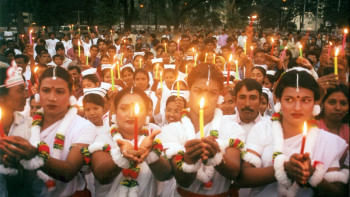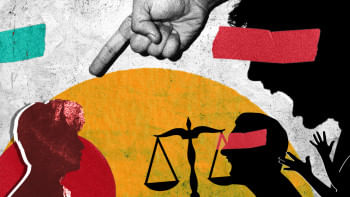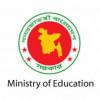The Story of Sharifa: One step forward, many steps backward?

On June 26, it was reported that the much-debated Sharifa's story would be removed from the Class 7 history and social science textbook. Earlier this year, fundamentalist and reactionary figures drummed up public sentiment against the inclusion of "The Story of Sharifa" in the NCTB curriculum and a probe committee consisting of only cisgender men was formed, and following its recommendation, the education ministry announced the retraction of the passage in June.
This long battle over Sharifa's story, fought over the course of half a year, led to a ruling in favour of the reactionary camp who strong-armed the authorities with their vehement opposition. However, perhaps this framing of our ministries and public officials as powerless to do anything but concede to majoritarian demands lets them off the hook too easily. It fails to hold them accountable for their continued inability to anticipate and prepare for what should, by now, be foreseeable consequences of their half-baked attempts at development, diversity, and inclusion. After all, this trend of brandishing new projects and policies with the stated claim of supporting minorities, only to fail to uphold the promises—either as a result of external public pressure or internal structural shortcomings—has been repeated so often it is now a too-predictable pattern.
In the case of gender diverse rights, this performative back-and-forth far precedes Sharifa's tale. Among the most egregious and commonly cited instances date back to 2014-15, when the Ministry of Social Welfare had offered employment for members of the hijra community, only to then issue a memorandum noting that the authenticity of the applicants' gender identities would need to be determined through medical examinations. This betrayed a fundamental misunderstanding and also a woeful lack of rapport with the community, as it wrongfully endorsed the popular misconception that the hijra community only comprises intersex individuals (even this understanding is limited, as it only takes genital ambiguity into account). In actuality, the label hijra acts as both a gender and cultural marker, and the community is composed of individuals belonging to a diverse range of identities—primarily transgender women and intersex people.
Hinging on this misconception, all 12 selected applicants, who identified as hijra, were subjected to check-ups that invaded their privacy—they were strip-searched, inappropriately touched by non-professionals, and photographed when found to have "male" genitalia. Not only were they rejected from a job opportunity marked out for them, they were also severely humiliated when their information leaked to the media. Had it not been for the evident incompetence, such spectacular failure would make one think that the very premise of the project was malicious from the start.
Ten years on, we still seem to lack the community involvement and support infrastructure needed to ensure these initiatives truly help the people they are supposed to without adding to their miseries.
"The Story of Sharifa" could have been a step in the right direction. It had the potential to promote diverse perspectives among young learners, particularly at an age when many go through puberty and form a sense of their own identity. With numerous gender diverse individuals recounting that some of the earliest and harshest discrimination they faced had been at school, Sharifa's story could have taught students to be compassionate toward differences, effectively rooting out the sort of bullying that is perpetuated on the basis of non-normative gender expression.
But perhaps that is too generous and optimistic a consideration of what the story alone could have achieved if it existed in a vacuum. The truth is that it doesn't.
Throughout our own school lives, we have heard stories of how chapters teaching reproductive health (the closest thing we had to sex education) would routinely be left out of the syllabus, glued, stapled shut, or torn out altogether because teachers did not know how to broach the taboo topic. Without any supporting infrastructure in place to supplement the otherwise performative inclusion of "The Story of Sharifa" in textbooks, who's to say that, even in the absence of publicly reactionary forces, we would not have wound up in the exact same situation again—with pages glued, stapled, torn out, or otherwise excluded? The onus of completely altering the societal perception of an entire community and rooting out centuries of systemic prejudice cannot fall on a single textbook entry.
This was a measure that should have been preceded by extensive gender-sensitivity training and community engagement, not only of those involved with the creation of the textbook chapter, but also and especially of the educators who would be teaching it in classrooms nationwide. Of course, such failures only reveal the intersectional nature of these issues, as the lack of investment in teachers' training across schools in Bangladesh becomes evident long before one can even reach a part of the curriculum as miniscule as one social science textbook entry.
Another particularly appalling example of the state's lack of commitment to ensuring even the most fundamental rights for the gender diverse community is the nebulous language in state policies and projects. Over the past decade or so, in the years since the hijra community received official recognition in 2013, the terms "hijra", "transgender", and "third gender" have been used interchangeably without attempts being made to clearly, if at all, define which groups of people each of these labels refers to. Time and again, this has led to disastrous misconstruals such as the social welfare ministry's debacle, conflict over who is a "real" or "fake" hijra, and the incitement of anti-trans movements. With terms such as "third gender" also in use, including in "The Story of Sharifa", we are repeatedly forced to contend with their implicit but invariably patriarchal hierarchies—if there is a "third" gender, then by default, are men the first and women the second?
In 2022, during the recording of the national census, all gender diverse people (trans men and women, non-binary individuals, intersex people, hijra, etc.) were lumped together under "hijra". Since many did not feel comfortable identifying with the category on account of its sociocultural implications, we were left with a record of only 12,000 gender diverse people in all of Bangladesh—around 0.01 percent of the population—as opposed to community estimates ranging in the 1-2 lakhs. The situation was also exacerbated by accounts of census workers refusing to log anyone who did not "appear hijra", once again revealing the desperate need for sensitivity training. How can we begin to work for a community so relegated to the margins if we can't even render a decent estimate of the number of people in it?
Because it is so tragically commonplace for the trans and hijra communities in Bangladesh to be tokenised and used for political, corporate, and development sector clout, they are no strangers to fair-weather allies. Time and again, we are forced to see our towering institutions, with all the necessary resources at their disposal, stagger and stumble their way into half-hearted, tokenistic gestures that can be recalled and apologised for tenfold the moment a meme or hashtag goes viral. This lack of foresight continues to be far more damaging to the communities they seek to help than if they had not been attempted at all. Because these institutions are largely untouchable, the brunt of public wrath and mob violence falls upon those more accessible and vulnerable—the marginalised community itself; not to mention, reactionary forces see any and all concessions as an absolute moral win.
In a landscape replete with odd addendums and outright renunciations, what message does it send when a state and its ministries fail to stand their ground against majoritarian threats? And what message does it send our students, at whom the story and textbook are aimed—that instead of forging empathy, tolerance, and solidarity, they should approach even the slightest hints of difference or deviation from the norm as a personal affront to their own beliefs? That anyone they do not agree with can simply be bullied into submission?
In truth, there can be no progress if we keep failing to recognise the need for comprehensive development measures, and the importance of developing the political will and spine to see them through. "The Story of Sharifa" is just one instance in a dishearteningly long line of such measures, which only serve to highlight precisely why they do not work.
We must let our underserved communities discuss and dictate the terms of their own liberation, rather than speaking for (and over) them as if we know what is best for them; it has become rather evident that we do not. The very least we owe them is to not compromise on their behalf.
Amreeta Lethe is a writer and translator, and sub-editor at Star Books and Literature.
Views expressed in this article are the author's own.
Follow The Daily Star Opinion on Facebook for the latest opinions, commentaries and analyses by experts and professionals. To contribute your article or letter to The Daily Star Opinion, see our guidelines for submission.

 For all latest news, follow The Daily Star's Google News channel.
For all latest news, follow The Daily Star's Google News channel. 











Comments